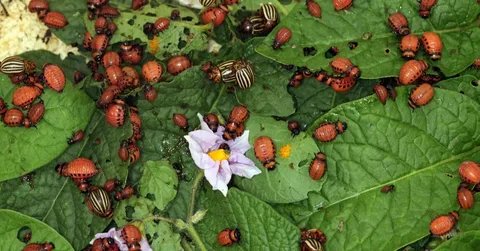If you’re growing potatoes in your garden, you might already be familiar with the destructive power of the **Colorado potato beetle**. These pests can wreak havoc on your potato plants, leaving behind a trail of defoliation and stunted growth. While chemical pesticides are a common solution, they can harm beneficial insects, the environment, and even your health. Luckily, there are several **natural ways to eliminate Colorado potato beetles** without resorting to harmful chemicals. In this guide, we’ll explore effective, eco-friendly methods to keep these pesky beetles at bay and protect your potato crop.
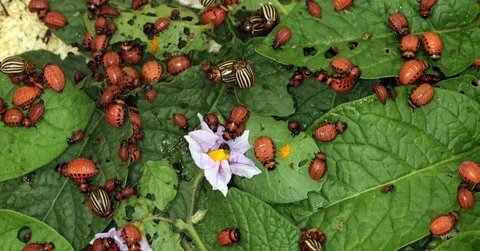
### 1. **Handpicking: The Simple and Effective Solution**
One of the most straightforward ways to control Colorado potato beetles is by **handpicking** them off your plants. While it may seem tedious, it’s highly effective and allows you to target beetles directly without harming the environment.
#### **How to Handpick Colorado Potato Beetles**:
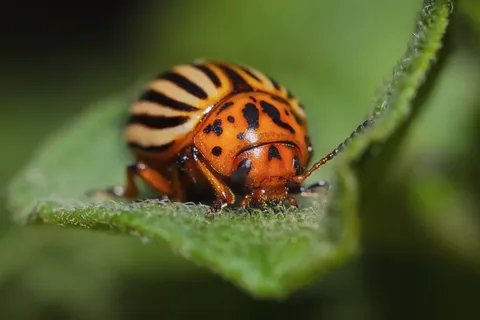
– **Inspect your plants**: Check your potato plants regularly, especially the underside of leaves, where beetles and their larvae tend to hide.
– **Remove adult beetles and larvae**: Gently pluck the beetles and larvae off the leaves. You can either crush them or drop them into a container of soapy water to kill them.
– **Stay vigilant**: Continue inspecting your plants weekly and remove any new beetles that appear. Regular handpicking is essential to keep the beetle population under control.
Although handpicking may take some time, it’s a non-toxic, immediate way to reduce the number of beetles without using any harmful chemicals.
### 2. **Use Diatomaceous Earth (DE) to Deter Beetles**
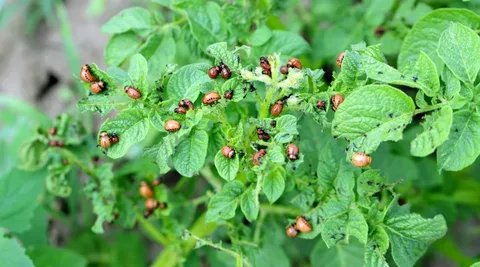
**Diatomaceous earth** is a natural substance made from the fossilized remains of tiny aquatic organisms. It’s an excellent option for controlling **Colorado potato beetles** and other pests because it’s non-toxic to humans, pets, and beneficial insects but deadly to soft-bodied pests.
#### **How to Apply Diatomaceous Earth**:
– **Sprinkle DE around your plants**: Lightly dust the leaves, stems, and soil surrounding your potato plants with diatomaceous earth. It works by causing the beetles to dehydrate and die upon contact.
– **Reapply after rain**: DE loses its effectiveness when wet, so reapply it after heavy rain or watering.
– **Safety tip**: When applying DE, wear a mask to avoid inhaling the fine particles. It can irritate your lungs, so it’s best to apply it on dry days when there’s less wind.
Diatomaceous earth is a natural and highly effective method to control Colorado potato beetles, without causing harm to the environment.
### 3. **Neem Oil: A Powerful Natural Insecticide**
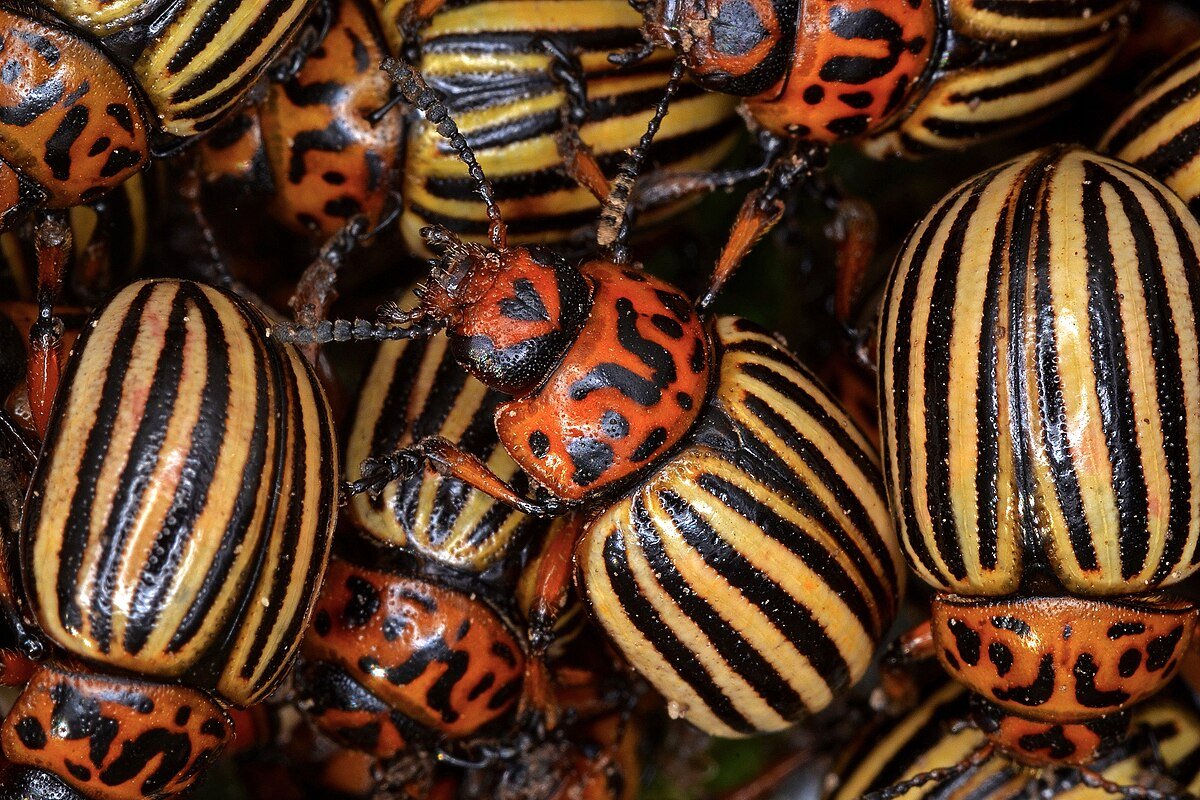
**Neem oil** is a versatile, plant-based insecticide derived from the neem tree. It works by disrupting the beetles’ life cycle and preventing them from feeding on your plants. Neem oil also acts as a repellent and can deter Colorado potato beetles from settling on your potatoes.
#### **How to Use Neem Oil for Colorado Potato Beetles**:
– **Mix with water**: Dilute neem oil with water according to the instructions on the label (usually 1-2 tablespoons of neem oil per gallon of water).
– **Spray your plants**: Use a sprayer to thoroughly coat the potato plants, including the leaves, stems, and soil around the base of the plant.
– **Apply in the early morning or evening**: To avoid burning your plants, apply neem oil during the cooler parts of the day, such as early morning or late evening.
– **Repeat applications**: For best results, reapply neem oil every 7-14 days or after heavy rainfall.
Neem oil not only targets Colorado potato beetles but also helps control their larvae and eggs, reducing the beetle population over time.
### 4. **Beneficial Nematodes: Natural Predators of Potato Beetles**
**Beneficial nematodes** are microscopic, soil-dwelling organisms that act as natural predators of many pests, including Colorado potato beetles. These nematodes attack the larvae of the beetles, preventing them from maturing into adults that will later damage your plants.
#### **How to Use Beneficial Nematodes**:
– **Purchase nematodes**: You can buy beneficial nematodes online or at garden centers. Be sure to choose a species that targets **Colorado potato beetle larvae**.
– **Apply to the soil**: Follow the instructions provided with the nematodes to ensure proper application. Typically, you’ll mix the nematodes with water and apply them to the soil around your potato plants.
– **Water regularly**: Keep the soil moist after application to ensure the nematodes stay active and penetrate the soil effectively.
Beneficial nematodes are a natural and safe way to reduce the beetle larvae population and prevent damage to your potato crop.
### 5. **Companion Planting: Use Nature to Your Advantage**
Companion planting involves planting certain types of plants alongside your potatoes to naturally repel pests like the Colorado potato beetle. Some plants produce scents or chemicals that beetles find unpleasant, keeping them away from your potatoes.
#### **Best Companion Plants for Potatoes**:
– **Marigolds**: The strong scent of marigolds can repel Colorado potato beetles and other pests.
– **Garlic**: Planting garlic near your potatoes can act as a natural repellent for beetles.
– **Basil**: The aromatic oils in basil can help deter pests and protect your potato plants.
By integrating these companion plants with your potato crop, you can naturally ward off beetles and reduce the need for other pest control methods.
### 6. **Row Covers and Physical Barriers**
**Row covers** or **garden netting** are excellent tools for protecting your potato plants from Colorado potato beetles. These physical barriers prevent adult beetles from accessing the plants, reducing the chances of infestation.
#### **How to Use Row Covers**:
– **Install row covers early**: Place row covers over your potato plants when they are young and before beetles start to appear.
– **Ensure proper ventilation**: Make sure the covers allow air and sunlight to reach the plants while keeping beetles out. Use fine mesh netting for the best protection.
– **Remove the covers when needed**: Once the plants mature and the beetles are no longer a threat, you can remove the row covers.
Row covers are an excellent, non-toxic way to protect your potatoes throughout the growing season.
### **Keep Your Potatoes Safe, Naturally**
Dealing with Colorado potato beetles doesn’t have to involve toxic chemicals. There are plenty of **natural and effective methods** to eliminate these pests, such as handpicking, using diatomaceous earth, neem oil, beneficial nematodes, companion planting, and row covers. By adopting these eco-friendly strategies, you can protect your potato crop while preserving the health of your garden and the environment.
